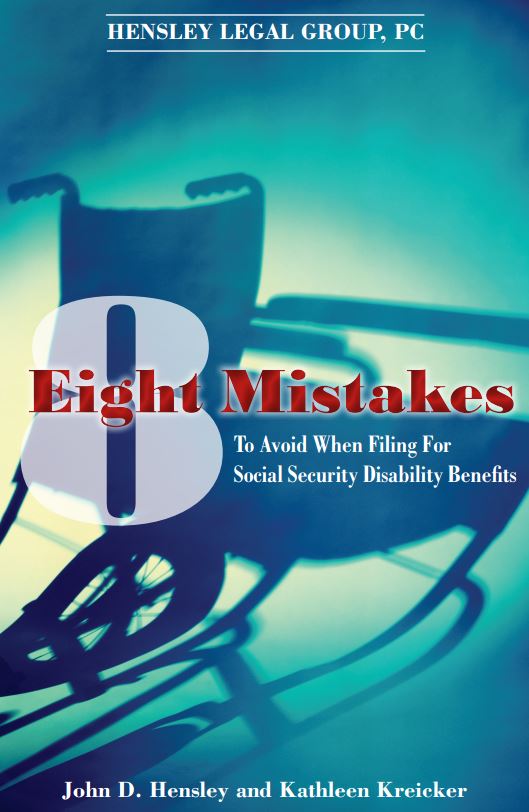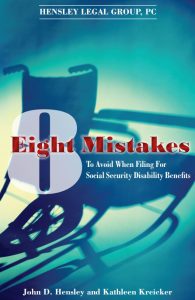Social Security Disability Benefits Have “Sell-By” Dates
We’re all used to seeing those “sell by” dates stamped on food and medicine packaging, warning that the product inside has a limited shelf-life, after which it becomes unfit for use. Few people realize that Social Security benefits for the disabled have a shelf-life too. The fact is, many people are only vaguely aware that […]

September 21, 2016
We’re all used to seeing those “sell by” dates stamped on food and medicine packaging, warning that the product inside has a limited shelf-life, after which it becomes unfit for use. Few people realize that Social Security benefits for the disabled have a shelf-life too.
The fact is, many people are only vaguely aware that Social Security exists in the first place. Few know how to go about getting the benefits they need and deserve. Part of getting that help is understanding how the system works.
There are two primary types of disability benefits. They each have a shelf-life in their own unique way.
- DIB (SSDI) – Disability Insurance Benefits
DIB is the disability program for those who have been employed long enough to acquire “insured status.” Having insured status means that you worked enough to accumulate a sufficient number of work credits. A person usually must have been employed for five out of the last ten years to be insured for benefits. The more money you earned when you were working, the higher your benefit will be.
 The sell-by date? There are two important things to remember about filing for DIB:
The sell-by date? There are two important things to remember about filing for DIB:
- For DIB, retroactive benefits cannot be paid for more than twelve months prior to the application date. That means, if you wait too long to file your application after becoming disabled, you may lose benefits.
- The credits you earned while working will expire within a few years of the time you stop working. In order to qualify for DIB, you must prove you became disabled while your work credits are still in effect.
- SSI – Supplemental Security Income
SSI is needs-based rather than earnings-based. You can qualify without ever having held a job or accumulating credits, so long as you meet certain asset and income limitations (your household income and assets must fall below a certain threshold). The amount of a person’s SSI benefit depends on his or her financial situation rather than on past earnings.
The sell-by date?
- For SSI, retroactive benefits can only be paid starting with the first month after the month the application was filed. That means the longer you wait to file, the less you’ll receive in retroactive pay.
What is a work credit and how do I earn one?
Work credits are the building blocks that Social Security uses to determine whether a person has the minimum amount of covered work time to qualify for Disability Insurance Benefits. When we work and pay Social Security taxes, we earn credits for each year. That’s true for all retirees, not only for the disabled.
In 2016, for example, you receive one credit for each $1,260 of earnings, up to a maximum of four credits per year. Credits earned remain on your record even if you change jobs or have no earnings for a period of time.
 When it comes to the number of work credits needed for disability benefits, it depends on your age when you become disabled:
When it comes to the number of work credits needed for disability benefits, it depends on your age when you become disabled:
- Under age 24 – You may qualify if you have 6 credits earned in the 3-year period ending when the disability started.
- Age 24 to 31 – You may qualify if you worked half the time between age 21 and the time you became disabled.
- Age 31 or older – The number of credits needed ranges from 20 to 40 depending on your age.
- Unless you are blind, 20 of the credits must have been earned in the ten years immediately before you became disabled.
It’s very important to file for Social Security benefits as soon as you realize you cannot work because of a disability.
For one thing, the process of filing for Social Security disability can take a long time. How long? Sometimes more than two years from the time you submit your initial application until the time you are given a chance to present your case to a judge.
What this all boils down to is that if you wait too long to apply for Social Security disability, you may not be entitled to all your back-pay. Another danger of waiting to apply: your work credits may expire, making it more difficult to obtain Disability Insurance Benefits.
Although DIB and SSI work by different sets of rules, the concept is the same – helping support people who can’t work because they have a medical condition that’s expected to last at least one year or to result in death.
“You should apply for disability benefits as soon as you become disabled,” is the advice offered on the Social Security Administration website. You can apply in any of these ways:
- Filling out a form online
- Calling to set up an appointment at the Social Security office
- Calling to set up an appointment for someone to take your claim information by phone
- Hiring an attorney to help your file your claim
 There’s an alert on the SSA website about legal representation:
There’s an alert on the SSA website about legal representation:
“You have the right to be represented by an attorney or other qualified person of your choice when you do business with Social Security.”
Social Security disability benefits are a disabled person’s sole source of income, and many who deserve those benefits have a difficult time navigating the very complex and lengthy process of qualifying for that help. Tragically, the majority of disabled Americans have their claims rejected because they don’t understand how the system works.
It’s not that the government is trying to withhold benefits from those who so sorely need them, as we say in, “Eight Mistakes to Avoid When Filing For Social Security Disability Benefits.” The government must be rigorous so that the resources can be directed to those who most deserve the help.
The very first stage of that long and complex process revolves around the application for benefits, so delaying to file a claim can prove to be a costly mistake.